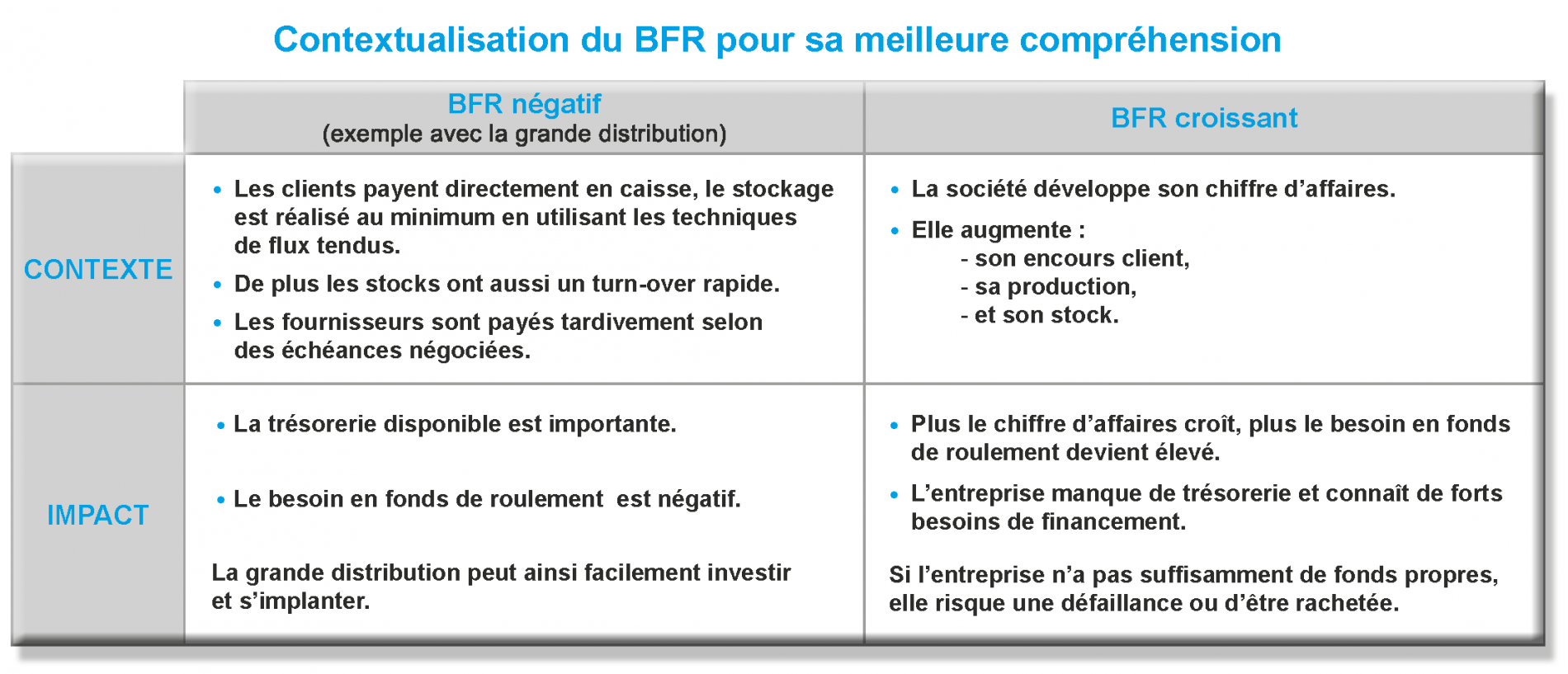The Working Capital Requirement (WCR) is the need for financing between the time the company settles its creditors and the time its creditors settle it. Relying on the relationship between declining customer claims, increasing supplier debt and inventory management, it reflects the financial impact that a company bears as a result of the mismatch between receipts and disbursements.
In terms of performance, these components make it possible to adapt cash flow as closely as possible to reality and to find quick and efficient adjustment solutions in the search for financing.
The levers to optimize it
By definition, the WCR is volatile and depends on the activity of the company. In case of an increase in activity, seasonal or growth in turnover activity, it increases in the same proportions. It is therefore imperative to find short-term financing proportional to this need for cash, or means to reduce this need.
The WCR is systematically calculated by bankers, financial analysts and investors. Divided into two operating/non-operating categories, its calculation makes it possible to predict the cash flows necessary to finance the business cycle. The shorter the cycle, the less time the capital remains immobilized in the operating process.
As a general rule, better management of the WCR involves:
- A decrease in customer credit (shortening of billing times and delays in payment of invoices, recovery of customers and delays in processing disputes and amicable recovery, negotiation of settlement conditions for new contracts, automation of the customer recovery process, etc.).
- A longer payment period for suppliers. The longer the payment times for suppliers, the more the company improves its need for working capital in accordance with legal and contractual deadlines.
- Stock reduction. The larger a company’s inventory, the greater its need for working capital.
The WCR, a contextual indicator of corporate health
The Working Capital Requirement is a very good indicator of the company’s health. A high WCR does not necessarily indicate poor financial health. It must be linked to the business sector and be compared over time with its evolution.
On the other hand, its deterioration is usually indicative of cash flow pressures, or even financial difficulties, up to and including termination of payment. As part of a solvency analysis, it is therefore necessary to understand the solutions that the company is putting in place to control its cash flow requirement. Things are even more complex for companies with a seasonal or high growth activity, and which need a lot of liquidity to meet their orders.
In conclusion, the optimized WCR is linked to operational excellence in conciliation dictated by the growth of turnover and the maintenance of financial balances. It is a crucial indicator in the management of a company.

Read more
Our support in risk management
Now discover Ellisphere’s expertise on your customer/supplier risk management issues through our dedicated approach.






